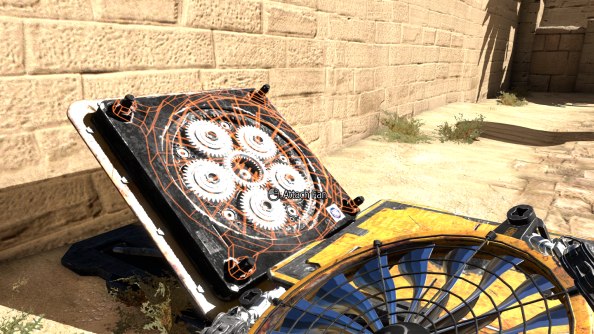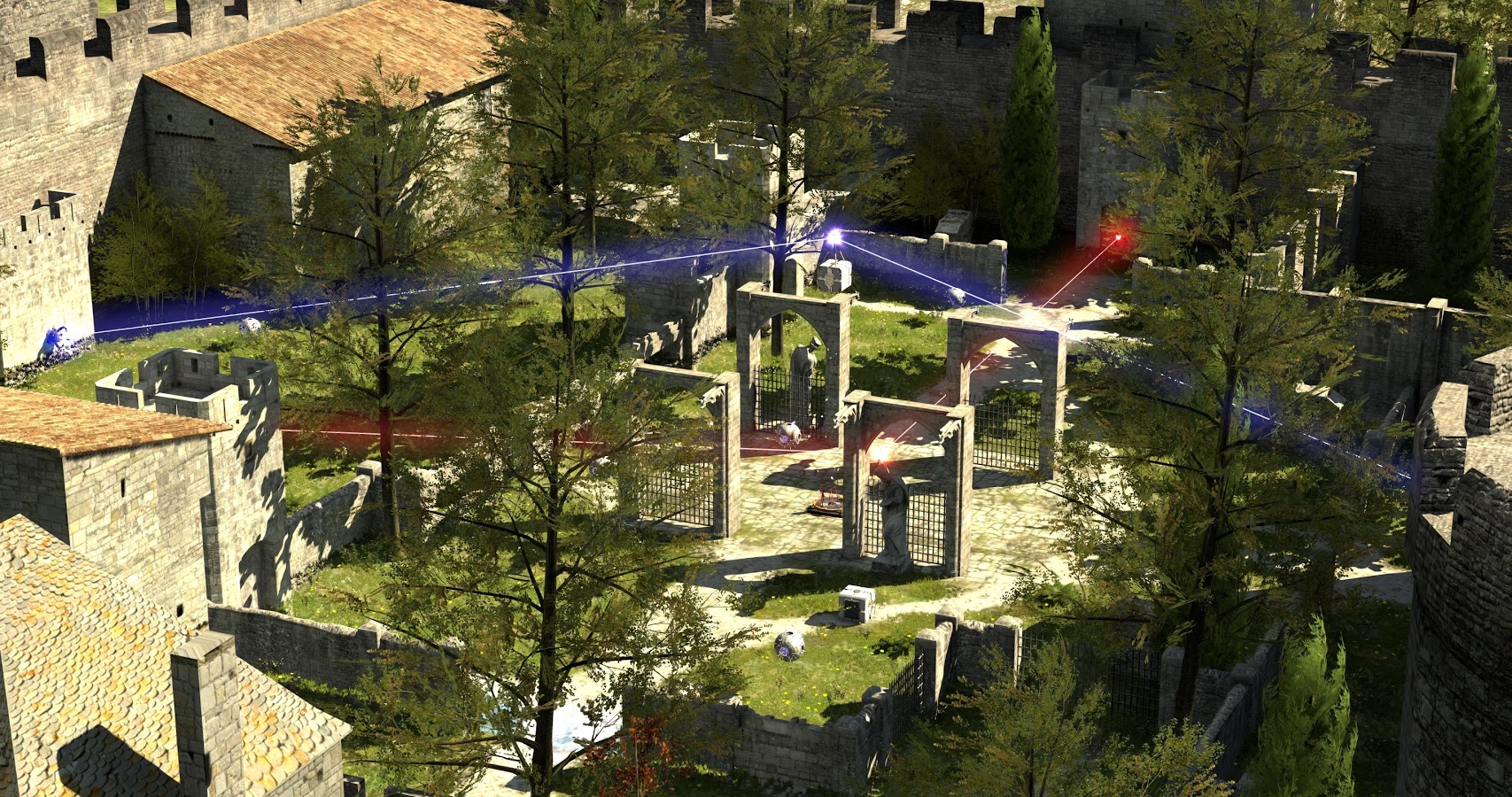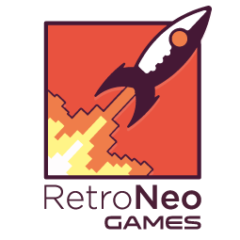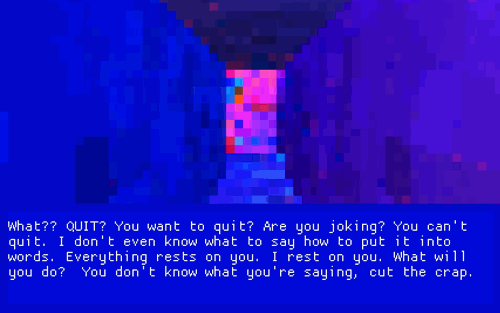
Hey. So it’s been a few weeks since the last episode of Player Too. To remind you, this is my documented approach to trying to introduce my girlfriend Claire, who identifies as not being a gamer, to the wonderful world of games. We try out games that might appeal to her inquisitive side, and that might have a lower skill-barrier to entry. Then we discuss the games themselves and, particularly, their value for developing a gaming interest in a self-proclaimed non-gamer.
Click the link if you want to catch up on Episode 2. In it I closed by saying we’d probably get into Sherlock Holmes: Crimes and Punishments or a Telltale Games series. While we’ve bought and just about started those (Game of Thrones by Telltale), we’re not far enough in to have enough to say about them. What we have played in the last few weeks is The Talos Principle and Super Meat Boy! For the first time, I played very little of the games and Claire chose to pick them up and play without me helping or watching or whatever. I think that’s progress!
The Talos Principle
So this is puzzle game. As I’ve said before, Claire is into mysteries, crosswords, sudoku, logic puzzles, etc. We figured this would be a good one to do. Having developed some walking skills in Gone Home we thought she could tackle this, maybe on her way to Portal, which does require a lot of skill. I’ve heard this game compared to Portal before, but the only similarities I can see is that they’re both first person puzzle games.
Graphically, this is the best game we’ve played so far. I heard Claire raving about how good it looked, then I came to check it out on her laptop and it was running everything on minimum. I loaded up the demo on my PC with my GTX970 and absolutely blew her mind! So, points there, but I think graphics are at their most important when you’re trying to sell a game through screenshots or videos. Once you’re in a flow, you don’t care what a game looks like, and gameplay trumps graphics for overall experience. Personal opinion disclaimer; whatever. I’m saying I don’t think good graphics will convert Claire to gaming. And they didn’t. She resumed play on her laptop happily enough.
She put about 12 hours into the game but has called it quits. I saw her solve a bunch of different puzzles and learn new mechanics, but in the end she was frustrated by a few things.
The story didn’t grab her at all. I also found the deity to be more annoying than intriguing. I can’t even say, from what I saw, that the story is drip-fed to you. It’s more like it’s totally withheld until presumably some later point that we didn’t reach. So without the story pulling you through those tougher puzzles, frustration sets in.

I think that with a puzzle game you should have one problem preventing your advancement. “I don’t know if I’ve figured this out correctly”. Then you use your skills and the mechanics you’ve been shown to test your hypothesis and either you were right, or you create a new hypothesis.
Claire and I both suffered from a second hindrance, though, which I feel is a fault of the game. “I don’t know if they’ve introduced a new mechanic”. I didn’t play much of the game but I beat the demo, and even in that I was frustrated when I found a puzzle had to be beaten by doing something with a fan. You assume that a fan blows something, and it does. So the device is introduced and you see it needs to blow something. However, you also need to know that the fan is weighty enough to function like a box does on pressure pads. So you actually had two things to figure out with a brand new device that wasn’t explained.
Apparently this occurs a bit more in the full game. It feels a bit like time wasting to me, where other games make a point of introducing new mechanics in easy to understand ways. We’re used to a device having a function in a game or puzzle. Figuring that out and then testing new hypotheses with no clue that there’s another function all along feels like a cheap way to make a puzzle harder. At least there are only a handful of different devices so this doesn’t hold the game back too much but regardless, I think many would agree that in a game, particularly a puzzle one, both new and old players should be clear about what the rules of the game are.

Claire was also frustrated that she wasn’t always clear where she should go next to even find a new puzzle. This is her experience, as a new player. I’m not saying all players would find these same frustrations, particularly if they’re used to an open-world or hub-and-spoke model of game world. Maybe they would. I can’t say.
A third problem she had, as someone less experienced with a first-person control scheme was “I don’t know if I’ve figured this out but can’t pull it off because of my control skills, or if I haven’t figured it out yet”. This isn’t the game’s fault, but contributed to Claire’s frustration when combined with our afforementioned second problem. This led to a lot of attempts wasted trying to do something because she believed she needed to just up her skills to accomplish it, when really there was a new mechanic in play. Once or twice I was called in to see if she had it right, by manoeuvring around enemies with more finely tuned timing. I proved her hypothesis right and she moved on, but had been frustrated because of her skill level.
This is my fault for recommending the game at this stage, perhaps. I heard that the game didn’t demand much skill in terms of movement, but maybe we should have still come via The Stanley Parable to get some more movement experience first. Claire’s skills improved over her 12 hours of play, and she had some of the satisfaction you get from beating a puzzle game, but overall she didn’t enjoy it.

Claire’s Score: 7/10. Yes, I know the game frequently scores 9/10, but understand, there’s a value in knowing what a first-time (or thereabouts) gamer thinks of a game too, not just what the games press thinks. This is more a score of Claire’s personal enjoyment. She found herself frustrated by not knowing if she hadn’t figured a puzzle out correctly yet based on the current rules, if she hadn’t figured out a new mechanic quietly introduced, or if she had figured it out but couldn’t prove the hypothesis because of her skill level. All the same, she spent a lot of time with it and enjoyed it a lot. She says she could return to do the odd puzzle in the future.
A better story might have pulled her into the game, but it didn’t intrigue her (or me) in the slightest at the level we got to. She didn’t mind the deity character like I did, but he didn’t exactly interest her either.
Player Too Result: A bit of a fail. Claire retains an interest in puzzle games, but we’re still a fair ways off playing Portal. We need to up her first person control skills if she’s going to get the most out of what gaming has to offer. I may have introduced this game a little too soon. The Stanley Parable should help with this, and Sherlock Holmes should satisfy the puzzle game side in the meantime.
Super Meat Boy
So, I’ve just stated that Claire’s gaming skills may have hindered her enjoyment of The Talos Principle. How do you think she got on with Super Meat Boy, an extremely difficult skill-based platformer? Quite well, actually.
Her first reaction was quite comical, though. The face she made when seeing the blood splatter everywhere and hearing the squishy sound effects was.. well I thought she was going to throw up, let’s say that. She didn’t, however, and after a few minutes she started to find the pitter patter of bloody feet even a bit funny.
Claire really enjoyed this game, although she only has two hours on it so far and doesn’t really intend to go further. Again, the story isn’t really there, so you’re just left to enjoy the game level by level. I watched her get to grips with the controls (using a game pad for the first time since she was a kid, bar a few minutes with Race The Sun one time) and clear the first couple of levels. Then I left her to her own devices. When I returned she was stuck on the last level of Chapter 1. So that’s level 17 or so. She knew what to do (this game isn’t often hard that way), she just hadn’t gotten there yet.

She offered me a go and after a half dozen attempts I cleared it. I have to say that the game is a lot of fun, and that replay feature where you see all your failed attempts die alongside your one success is inspired! Claire then had a few goes at the boss level, then passed it to me and I beat him in about a half dozen goes again (probably more, let’s be honest). She had somehow managed to clear the first chapter without realising that tapping A gives a short jump, while holding it gives a longer, higher jump. This becomes quite important.
We then tried a few fan made levels which were infuriatingly difficult. We quit and returned to Chapter 2 where the levels were now set in a hospital (of sorts) and there were piles of syringes everywhere to kill you. We couldn’t figure out how to beat the first level (I tried jumping from a very specific spot but never felt like I had the right idea as I kept hitting a pile of syringes no matter what I did) so we skipped it and I played the next couple. At this stage, the syringes made Claire lose her mettle for the game and cast her back to the squeamishness she’d had at the start, so she decided that she was done with it. She liked what she’d played but felt she’d reached the limits of her skill and enjoyment as the difficulty was ramping up fast.

Claire’s Score: 7.5/10. She found this very entertaining, and gross! She often got full-bodied laughs out of her own death, but all the same she doesn’t intend to play more of the game. She found the difficulty a to get significantly beyond her as the game progressed and had no desire to die upon piles of needles come Chapter 2.
Player Too Result: Hard to say. Here we tried a platformer that’s supposed to be difficult and Claire did pretty well at it. Like I said, I only got a few levels further than her. So she’s becoming more confident in her ability to take control of a game and succeed. This would have been a barrier before in a “no, I couldn’t possibly” kind of way. We also got her using a game pad and finding the fun in death and a quick restart.
These things would all indicate good progress towards the realm of gaming, except that she doesn’t intend to play the game again. Would she like a similar style of platformer that was less gross and a tad less difficult? Perhaps. Do comment if you can recommend any, as they’re not my area of expertise. We played Bro Force together once before but it was just hopeless. This was before the Player Too project so maybe it’s worth trying that again. Or Nidhogg, perhaps. Fez? Braid? Do comment.

So that’s it for the current episode. I’d like to state that Claire’s scores for games aren’t based on any particular criteria. They’re more like her personal enjoyment of the game, tempered by a bit of consideration for the objective merits of the game, whether she connected with them or not. They’re pretty arbitrary and I don’t encourage anyone to look back at older episodes and compare scores to conclude that Meat Boy is any better or worse than Race the Sun, for example. They’re basically the scores of a first time gamer, and by design, are becoming less meaningful as such since the aim of the Player Too series is to attempt to turn Claire into a gamer.
Basically, they’re just a bit of fun!
I can’t say if we’re any closer to turning Claire into a gamer this time, but her skills are definitely improving and she’s realising that there’s fun to be had in all types of games. So the project continues! Although we’ve learned to stay further away from blood and gore.
Next Time On Player Too: We’ve a lot of games to choose from for next time. We bought nearly all the Telltale games in that last Humble sale, as well as Sherlock Holmes: Crimes and Punishments and I’ve Fez and Luftrausers and Stealth Inc. 2 too! We will probably go with Sherlock and either the Stanley Parable or Game of Thrones (or both) for next time.
In the meantime, if you’ve any game recommendations or stories of how you brought a loved one into the world of gaming, do please share in the comments!
Until next time..














